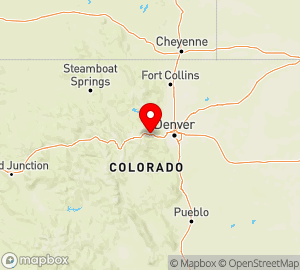Idaho
Idaho State Information

www.idaho.gov
Area (sq mi):: 83570.08 (land 82747.21; water 822.87) Population per square mile: 17.30
Population 2005: 1,429,096 State rank: 0 Population change: 2000-20005 10.40%; 1990-2000 28.50% Population 2000: 1,293,953 (White 88.00%; Black or African American 0.40%; Hispanic or Latino 7.90%; Asian 0.90%; Other 7.70%). Foreign born: 5.00%. Median age: 33.20
Income 2000: per capita $17,841; median household $37,572; Population below poverty level: 11.80% Personal per capita income (2000-2003): $24,075-$25,902
Unemployment (2004): 4.70% Unemployment change (from 2000): 0.10% Median travel time to work: 20.00 minutes Working outside county of residence: 19.10%
List of Idaho counties:
Idaho Parks
- US National Parks
- State Parks
- Parks and Conservation-Related Organizations - US
- National Wildlife Refuges
- National Trails
- National Scenic Byways
- National Grasslands
- National Forests
Idaho
Forty-third state; admitted on July 3, 1890
In 1963, Idaho held a centennial celebration marking the anniversary of its becoming a territory of the United States. From June 27 to July 6, numerous activities were sponsored by more than 165 organizations in the Boise area, including “Old Fashioned Bargain Days,” balls, parades, singing, street dancing, fireworks, a rifle shoot, sports events, an art exhibit, rodeo, picnics, a poetry reading, an air show, and a historical pageant presenting memorable episodes from the state’s history.
State capital: Boise
Nickname: Gem State
State motto: Esto perpetua (Latin “Let it be perpetual”)
State bird: Mountain bluebird (Sialia arctcia)
State fish: Cutthroat trout (Salmo clarki)
State flower: Syringa (Philadelphus lewisii)
State folk dance: Square dance
State fossil: Hagerman horse (Equus simplicidens)
State fruit: huckleberry (Vaccinium membranaceum)
State gem: Star garnet
State horse: Appaloosa
State insect: Monarch butterfly (Danaus plexippus)
State raptor: Peregrine falcon (falco peregrinus)
State song: “Here We Have Idaho”
State tree: Western white pine (Pinus monticola pinaceae)
State vegetable: Potato
More about state symbols at:
gov.idaho.gov/fyi/symbols/symbols_index.html
SOURCES:
AmerBkDays-2000, p. 498
AnnivHol-2000, p. 111
STATE OFFICES:
State web site:
www.idaho.gov
Office of the Governor
State Capitol Bldg
2nd Fl
Boise, ID 83720
208-334-2100
fax: 208-334-3454
gov.idaho.gov
Secretary of State
700 W Jefferson St
Rm 203
Boise, ID 83720
208-334-2300
fax: 208-334-2282
www.idsos.state.id.us
Idaho Commission for Libraries
325 W State St
Boise, ID 83702
208-334-2150
fax: 208-334-4016
libraries.idaho.gov/
Idaho
a state in the northwestern USA; one of the mountain states of the far west. Area, 216,400 sq km. Population, 699,000 (1967), of which 47.5 percent (1960) is urban. The capital is Boise. The native inhabitants are Indians (several thousand), forced onto reservations.
Most of Idaho occupies the southern edges of the Columbia Plateau and the Rocky Mountains that rise up to an elevation of 3,857 m. The southern part is in the Snake River valley. Agriculture is well developed chiefly in the southern part; 35 percent of the cultivated area, approximately 1 million hectares in 1960, is irrigated. Farms account for 29 percent of Idaho’s land area, of which approximately 37 percent is cultivated and the remaining part, as well as most of the state-owned lands, is used for grazing. The main crops are potatoes, sugar beets, wheat, and fodder; Idaho is the nation’s largest sower of potatoes. Horticulture is developed (mostly apples). Stock raising, chiefly of grazing livestock for meat, accounts for about 44 percent of the value of agricultural commodity production. In 1966 there were 1.6 million head of beef cattle and 897,000 sheep. Idaho occupies a prominent position in the USA in the mining of silver, zinc, and lead. Phosphorus is also mined. The manufacturing industry employs 30,000 people. Its branches are the nonfer-rous metallurgy (Kellogg), food, and lumber industries. There is considerable tourism in Sun Valley and other areas.
V. P. KOVALEVSKII